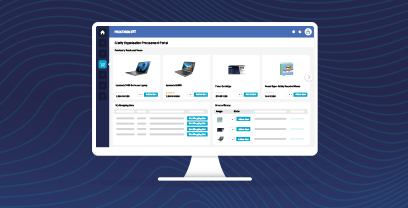|
The Forrester Wave™: Supplier Value Management Platforms, Q3 2024 See Report
Blog »
Digitizing Procurement: Where and How?
When it comes to the Procurement function, flaws in the supply chain can result in wasted time, increased costs, damaged relationships and in some cases, collapse a deal with a supplier altogether.
As we see and read around Procurement today, these negative impacts can be easily avoided by moving from archaic, manually intensive or paper-based processes that are still employed by many Procurement groups. To improve, leading organizations are striving to move away from inefficient manual processes to a streamlined digital process to reduce errors and optimize the entire Procurement process. Any part of the process that can be digitized, from order entry to customer shipment, means an immeasurably improved bottom line.
The Hackett Group identified four key ways Procurement can get digital. They define digital transformation as “the process of transitioning aspects of a traditional business into a digital business, principally by apply to innovate.” The key to digital business according to Hackett is to utilize digital technology in products, services and value networks to create value and achieve business outcomes. According to Hackett, companies looking to close the digital capability gap should prioritize the 4 key areas they identified in the report. These are:
- Improve stakeholder experience
- Orchestrate procurement as a Service Portfolio
- Leverage technology to accelerate digital transformation
- Setting a foundation for analytics driven culture
We also see digital procurement trending in the Public Sector. Procurement is a powerful tool for local economies. State and local agencies spend a lot of money to build highways, pave roads and provide services needed by the. Each year, the National Association of State Procurement Officials (NASPO) publishes a report called, Top 10 Priorities for State Procurement Leaders. NASPO conducts a survey of the state CPO to identify and prioritize the top procurement and technology issues facing state government. The priorities identified by NASPO include centralizing procurement, elevation the role central procurement office in the hierarchy of the executive branch, and active participation in creating an enterprise vision for the state.
Firms like KPMG LLP are also jumping in to offer professional insight on this digitization trend. Termed as “future-proofing”, KPMG argues that digital transformation or future-proofing will need to be at the core of a modern procurement organization. To remain competitive in the global market place, procurement teams must pay close attention to a constantly changing landscape. Even more difficult, they must be prepared to have a solution for problems that is not yet on the radar. If you are looking to take the steps towards digital transformation, we recommend reading KPMG’s whitepaper, Future-proof Procurement.
With the right tools and strategy, procurement is poised to benefit from digitization given its transaction and process-based nature. While operations are highly dependent on shop floor activity, and logistics must run multiple actors and variables in the chain, procurement’s role requires a greater emphasis on digital tools to help cut back time spent on rote tasks and boost worker productivity.


